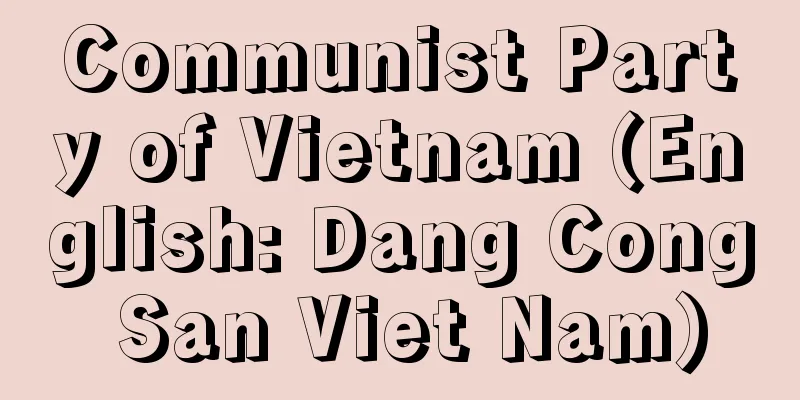Manshuin Temple

|
This is a Tendai sect temple in Takenouchi-cho, Ichijoji, Sakyo-ku, Kyoto. It is also called Takeuchi Monzeki. The principal image is Amida Nyorai. It is said that Saicho built it on Mount Hiei and enshrined the Amida Buddha there, but the name of the temple is unknown. Later, Zesan moved it to Saito and called it Tobibo. In 947 (Tenryaku 1), when Kitano Shrine was founded, Zesan became the head priest and moved there. During the Tennin era (1108-10), during the reign of Jinchu, the temple was renamed Manshuin. It was later moved to Kitayama, and then to the vicinity of the Imperial Palace when Kinkaku-ji Temple was built. During the Bunmei era (1469-87), Prince Jiun entered the temple and it became a monzeki temple. In 1656 (Meireki 2), Prince Ryosho rebuilt it on the same site, and the main hall, small shoin, and kuri were built. The eight-windowed teahouse (nationally designated an Important Cultural Property), said to have been favored by Kobori Enshu, and the dry landscape garden (nationally designated a Place of Scenic Beauty) are famous. Among the temple treasures are a colored silk statue of Acala, modeled after the Yellow Acala at Onjoji Temple, the Heian period "Kokin Wakashū" (Collection of Ancient and Modern Japanese Poetry), a gold-painted Heart Sutra on indigo blue paper written by Emperor Gonara, messages from Emperor Hanazono, poems by Emperor Go-Tsuchimikado and Emperor Go-Kashiwabara (scrolls of poems), a painting on the entrance wall called "Taketora-zu," the Ikenobo Senko Tachibana Map, and a summary of the Analects (all of which are National Important Cultural Properties), as well as many Buddhist classics and ancient documents. [Yoshimichi Shioiri] "Ancient Temple Pilgrimage: Kyoto 22: Manshuin Temple" (1978, Tankosha) Source: Shogakukan Encyclopedia Nipponica About Encyclopedia Nipponica Information | Legend |
|
京都市左京区一乗寺竹ノ内町にある天台宗門跡(もんぜき)寺。竹内(たけのうち)門跡ともいう。本尊は阿弥陀如来(あみだにょらい)。最澄(さいちょう)が比叡山(ひえいざん)に建立し阿弥陀仏を安置したのを始まりとするが、寺名不明。のち是算(ぜさん)が西塔(さいとう)に移し東尾坊(とうびぼう)と称し、947年(天暦1)北野神社創立時に是算が別当(べっとう)となりここに移り、天仁(てんにん)年間(1108~10)尋忠(じんちゅう)のとき曼殊院と改称。のち北山に移り金閣寺建立のため禁裏付近に移転、文明(ぶんめい)年間(1469~87)慈運法親王(じうんほっしんのう)が入寺して門跡寺となった。1656年(明暦2)良尚法親王が現地に再建、大書院(おおしょいん)(本堂)、小(こ)書院、庫裡(くり)などが建つ。小堀遠州好みといわれる八窓席(はっそうせき)の茶室(国重要文化財)や枯山水の庭園(国名勝)は名高い。寺宝には、園城寺(おんじょうじ)の黄不動を模した「絹本着色不動明王像」、平安時代の『古今和歌集』(ともに国宝)、後奈良(ごなら)天皇宸筆(しんぴつ)の紺紙金泥般若心経(はんにゃしんぎょう)、花園(はなぞの)天皇宸翰(しんかん)御消息(ごしょうそく)、後土御門(ごつちみかど)・後柏原(ごかしわばら)両天皇御詠草(御歌巻物)、玄関障壁画『竹虎図』、池坊(いけのぼう)専好立花図、論語総略(以上、国重要文化財)などのほか、仏教典籍、古文書類も多い。 [塩入良道] 『『古寺巡礼 京都22 曼殊院』(1978・淡交社)』 出典 小学館 日本大百科全書(ニッポニカ)日本大百科全書(ニッポニカ)について 情報 | 凡例 |
<<: Manchuria (Manchuria) - Manshu (English spelling) Mǎn zhōu
>>: Swastika pattern - Manjimon
Recommend
Porteño (English spelling) [Spain]
A derivative of puerto (port), it means "of t...
High temperature corrosion
…The temperature at which a material becomes unus...
Ideology
The name was coined by Destutt de Tracy. He pushe...
《Kano Chronicles》
...These states were conquered in the 19th centur...
"The Golden Age" (music)
...The dance polkas by J. Strauss and his son are...
Aligarh Movement - Aligarh Movement
A modern reform movement that began among Indian ...
Todai
The amount of tax collected per tan of rice field...
"Amateur Movies" - Amachuamubies
...This kind of experimental film movement seemed...
khorovod
...Musically, these are indistinguishable from th...
Sungkyunkwan (English spelling)
A representative facility for Korean Confucian edu...
Collot d'Herbois, JM (English)
…Reign of Terror [Takashi Koi]. . . *Some of the ...
cohort life table
…Today, there are two main types of life tables. ...
Karaoshi - Karaoshi
In the Middle Ages, bookmaking (copying, illumina...
Daiya River
This river flows through Nikko city in western To...
International Oil Company
...After that, small oil companies were concentra...









